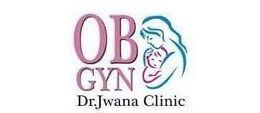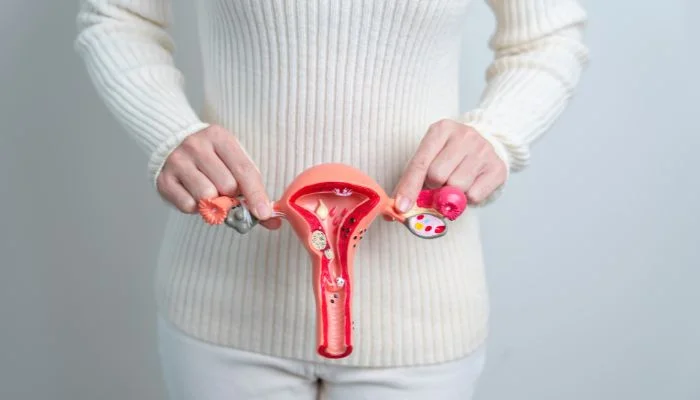Endometriosis, marked by the growth of uterine lining tissue outside the uterus, can severely impact a woman’s well-being, causing considerable pain and disruption in her life.
But what exactly causes this debilitating condition? Understanding the root endometriosis causes is crucial for managing its symptoms and enhancing the quality of life for those affected.
In this blog, we will delve into the main factors thought to contribute to the development of endometriosis.
What is Endometriosis?
Endometriosis is an often-painful condition characterized by the growth of tissue resembling the inner lining of the uterus, known as endometrium, outside the uterus. It often affects the ovaries, fallopian tubes and the tissue lining the pelvis.
During the menstrual cycle, these endometrial-like implants outside the uterus undergo similar monthly changes as the uterine lining: thickening, breakdown, and bleeding.
However, because this tissue cannot exit the body like menstrual blood, it becomes trapped, causing inflammation, scarring, and the formation of adhesions. This leads to severe pelvic pain, particularly during menstruation, along with infertility and other symptoms.
What are the Symptoms of Endometriosis?
The symptoms of endometriosis may include:
Lower abdomen and back pain during periods
Chronic pelvic pain
Acute menstrual cramps
Discomfort while peeing or pooping
Heavy or unusual bleeding during periods
Pain during intercourse
Diarrhea or constipation
Fatigue or feeling tired all the time
Difficulty in conceiving
If you experience any symptoms of endometriosis, it’s essential to speak with a gynecologist for proper evaluation and management.
What is the Main Cause of Endometriosis?
The exact endometriosis causes remains unknown, but several factors may contribute to its development. These include:
Retrograde Menstruation: One theory suggests that menstrual blood reverses its flow through the fallopian tubes into the pelvic cavity instead of exiting the body, resulting in the implantation of endometrial cells outside the uterus.
Hormonal Imbalances: Estrogen, a key hormone that regulates the menstrual cycle, significantly influences the growth and shedding of the uterine lining. Hormonal imbalances or an increased sensitivity to estrogen may promote the development of endometrial-like tissue outside the uterus.
Immune System Dysfunction: A compromised immune system might fail to recognize and eliminate endometrial cells outside the uterus, allowing them to implant and grow, leading to inflammation and pain.
Embryonic Cell Transformation: During fetal development, cells in the pelvic and abdominal cavities have the potential to become endometrial cells. Hormonal changes or environmental factors may trigger these cells to transform into endometrial-like tissue outside the uterus.
Environmental Factors: Exposure to toxins and chemicals, like, dioxins and polychlorinated biphenyls (PCBs), may increase the risk of developing endometriosis by disrupting hormone function and immune response.
Surgical Scars: Endometrial cells can attach to surgical incisions after a hysterectomy or C-section, potentially leading to endometriosis in these areas.
Also Read: Adenomyosis vs Endometriosis – What is the Main Difference?
What Leads to Endometriosis?
Several factors may increase the risk of developing endometriosis:
Family History: If a close relative, such as a mother or sister, has endometriosis, the likelihood of developing the condition is higher.
Menstrual History: Early onset of menstruation, short menstrual cycles, heavy menstrual periods, and prolonged menstruation may increase the risk of endometriosis.
Nulliparity: Women who have not given birth have a higher risk of developing endometriosis.
Medical Conditions: Conditions that affect menstrual flow, such as uterine abnormalities or pelvic inflammatory disease, can increase the risk of endometriosis.
Immune Disorders: Women with autoimmune diseases may have an increased risk of endometriosis.
Endocrine Disorders: Conditions that affect hormone levels, such as polycystic ovary syndrome (PCOS) or thyroid disorders, may increase the risk of endometriosis.
Lifestyle Factors: Factors such as smoking, excessive alcohol consumption, and a sedentary lifestyle may also increase the risk of developing endometriosis.
How is Endometriosis Diagnosed?
Endometriosis is usually diagnosed through a combination of medical history, pelvic examination, and imaging tests like ultrasound, CT scan, or MRI scan.
However, the only definitive way to diagnose endometriosis is laparoscopic surgery. In this procedure, a surgeon inserts a thin instrument through a small incision in the abdomen to view and potentially remove abnormal tissue for biopsy.
What are the Different Treatment Options for Endometriosis?
The treatment options of endometriosis may include:
Pain Medications: OTC or prescription pain relievers, like nonsteroidal anti-inflammatory drugs (NSAIDs), can help alleviate pelvic pain and discomfort associated with endometriosis.
Lifestyle Changes: Adopting a healthy modifications that includes regular exercise, a balanced diet, stress management techniques, and sufficient sleep, can help alleviate symptoms and improve the quality of life for women with endometriosis.
Hormonal Treatments: Hormonal therapies, including, birth control pills, hormonal contraceptives, progestin therapy, or gonadotropin-releasing hormone (GnRH) agonists, may help regulate the menstrual cycle and alleviate pain by suppressing ovulation and estrogen production.
Surgical Intervention: Laparoscopic surgery, also known as minimally invasive surgery, may be recommended to remove endometrial implants, scar tissue, and adhesions. In more severe cases, a hysterectomy might be required to remove your ovaries, cervix, or uterus.

